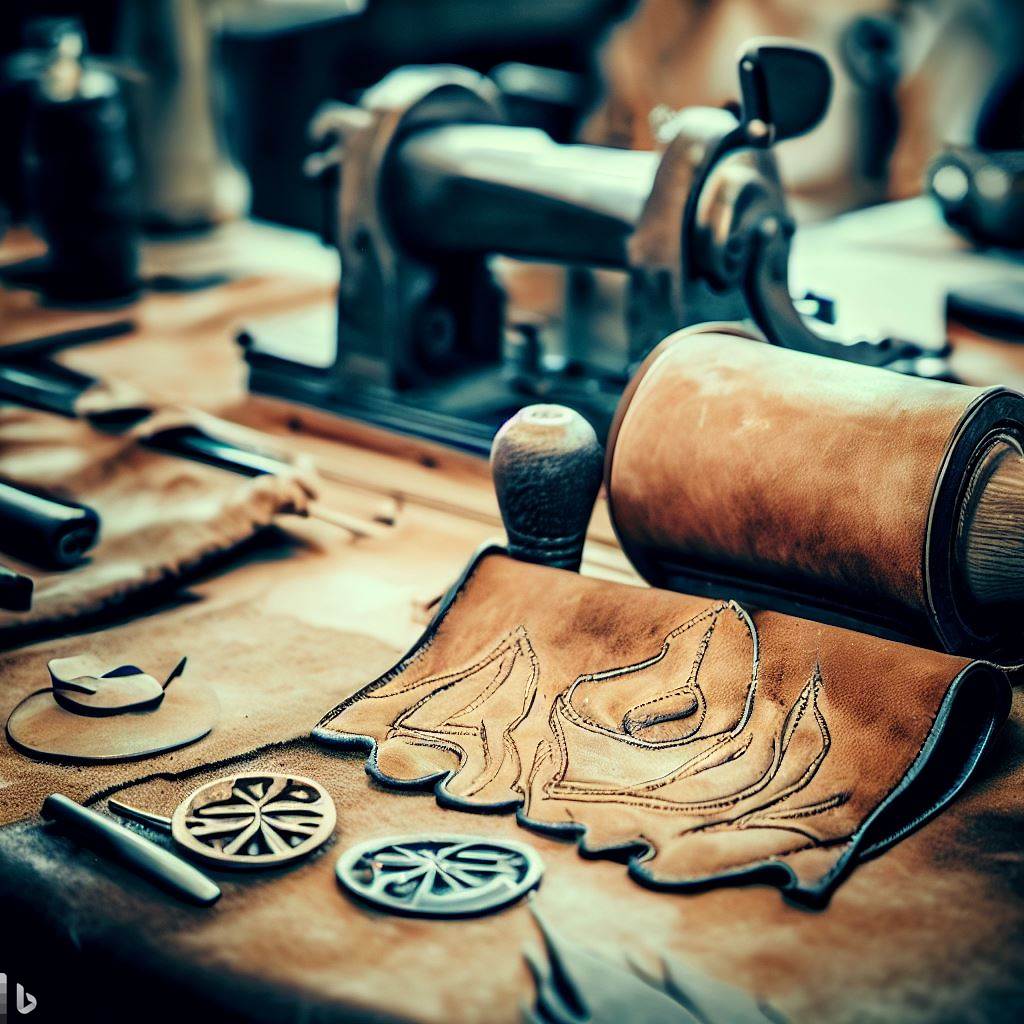Pursuing Leatherworking as a Career: Transforming Passion into Profession
Introduction
Many leather artisans start as hobbyists but over time feel compelled to pursue their craft professionally full-time. Transforming a leisure activity into a viable career and livelihood requires much preparation and strategic planning.
In this guide, we walk through key considerations for establishing leatherworking as a sustainable profession from business essentials to maintaining creative fulfillment. We also provide advice from successful artisans on how they built rewarding leather careers. With dedication, a hobbyist mindset can evolve into a prosperous vocation without losing joy and integrity. Making a beloved craft one’s work rewards with purpose and pride.
Evaluating Readiness for a Professional Pivot
Before taking the intimidating leap to depend on craftwork for income, honest self-assessment helps set the stage for stability and success.
Honestly Assessing Skill Level
A realistic understanding of current technical abilities through unbiased feedback prevents jumping ahead before competence is proven consistently over time across varied pieces. Mastery brings artistic freedom.
Researching the Local Leather Economy
Scouting local leather businesses provides crucial insights on customer demand, prices, business models, gaps, and networking opportunities within regional markets. Due diligence reduces risk.
Determining Personal Financial Needs
Adding up essential living expenses, costs of establishing a studio, and potential healthcare considerations helps estimate the yearly bare minimum sales necessary for leaping to still cover personal needs. Know the numbers.
Gauging Family Support System
Reliable family encouragement provides vital emotional support navigating business complexities like fluctuating early income. Their faith helps perseverance. Honest discussions determine realistic expectations.
Developing an Identity and Portfolio
Conveying a defined personal leatherworking identity through branding and a strong body of work establishes credibility and attracts ideal customers.
Creating a Distinct Brand Identity
A logo, style guidelines, website look, shop aesthetics, and packaging establish visual brand recognition. A compelling origin story engages customers. Consistency in identity builds loyalty.
Producing a Breadth of Quality Work
Photographing a wide selection of leather items showcasing the full range of current techniques and styles provides initial content for portfolios and marketing. Variety proves skill.
Specializing in Specific Niches
Alongside broader examples, portfolios benefit from leather itemsShowcasing specialized niches like masks, armor, footwear, or restoration work. Focused specialties attract ideal clients.
Documenting Process and Story
Photos and videos documenting production methods from sourcing to finishing provide engaging behind-the-scenes content for websites. The craft’s story appeals to patrons.
Business Essentials for Establishing a Leather Shop
Handling mundane business registration, accounting, inventory, and legal protections may seem uncreative but proves foundational for fruitful leatherworking careers.
Forming a Business Entity
Structuring as a proper business like an LLC rather than operating informally protects personal assets if sued. Official licensing also enables opening business bank accounts.
Bookkeeping, Taxes, and Insurance
Keeping meticulous financial records avoids tax issues. Liability insurance safeguards studios. Staying legally compliant reduces future headaches. Consider hiring accountants to start.
Organizing Inventory and Supplies
Thoroughly cataloging material stock, costs, suppliers, and tool maintenance schedules keeps production efficient. Order essentials like shipping supplies proactively.
Learning Customer Service Skills
Even creatives benefit from developing friendly, organized customer communication, polite handling of issues, and systems for prompt order fulfillment and shipping. First impressions matter.
Developing Income Streams
Rather than relying on narrow sales avenues, diversifying leatherworking income through multiple channels provides financial resilience and exposure.
Online Shop and Custom Orders
Websites with integrated shopping carts offer 24/7 global availability for direct leather sales. Custom ordering platforms like Etsy expand reach.
Consigning with Local Boutiques
Displaying selections of quality leatherwear at area shops on commission introduces products to new local spenders. Store associations elevate credibility.
Teaching Workshops and Classes
Paid beginner leatherworking workshops provide additional income from skills already honed. Consider hosting both public and private group classes.
Seeking Corporate Brand Partners
Large brands may commission custom leather goods as promotional items or display pieces. These corporate collaborations fund passion projects.
Maintaining Work-Life Balance
The solitude and immersion leatherworking requires makes maintaining social connections and self-care essential for sustainable careers.
Limiting Work Hours
Without set office hours, makers must impose structure to prevent overwork burnout. Stop leather tasks at a set evening time on weekdays. Take regular weekend breaks.
Honoring Personal Relationships
Never neglect loved ones for the sake of leather orders. Frequently schedule shared meals, activities, and quality time offline together. Life balance fuels creativity.
Community and Socializing Outside Work
Prevent isolation through hobby groups, classes, volunteering, or networking events unrelated to leather. Varied socializing increases life perspective.
Practicing Wellness and Self-Care
Making healthy habits like exercise, nourishing food, nature walks, and ample sleep priorities counters prolonged sedentary artisan work. Holistic wellbeing raises quality.
Staying Inspired In Your Leather Career
Passion wanes without ongoing exploration. Discovering new inspirations sustains creative careers.
Continually Learning New Skills
Take regular classes to expand techniques. The challenge of mastering unfamiliar methods like leather pleating or embossing renews energy.
Attending Trade Shows and Conferences
Events invite discovering new tools, methods, and styles by interacting firsthand with fellow creators. Fresh workshops and seminars prevent stagnation.
Exploring Unrelated Arts and Culture
Looking outward at history, poetry, science, music and more of the world’s wonders fills the creative well to infuse back into leather designs. Curiosity surpasses specialization.
Collaborating with Fellow Artisans
Co-creating pieces combining the strengths of leatherworkers and other makers like jewelers or furniture builders often sparks innovative concepts through synergy. Community elevates.
Conclusion
Daily life presents vast differences between casually enjoying crafting and fully depending on leatherwork for income. However, by humbly honing skills, establishing smart business practices, and prioritizing personal wellbeing, passionate hobbyists can successfully transition to fulfilled professional artists without losing their creative spirit. While demanding determination and sacrifices, the achievements and community connections within a career crafting leather repay dedication with purpose according to countless artisans. Leather’s familiar textures continuously surprise with potential. When pursued with care and wisdom, a leatherworking vocation promises not just livelihood, but life enrichment.
